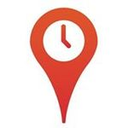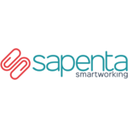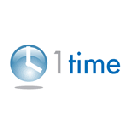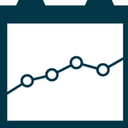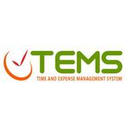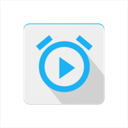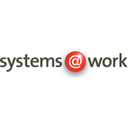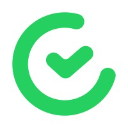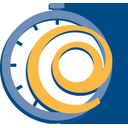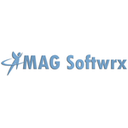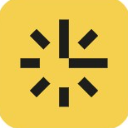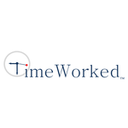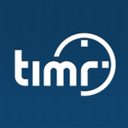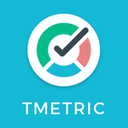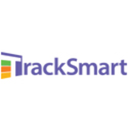Time tracking software: purchase guide
How to choose the right time tracking software? The complete guide
Time tracking has become essential for modern companies. Discover how to choose the ideal tool to optimize time management and comply with current regulations.
A time tracking software is a digital solution that automates the management of working hours, leave, absences, and project time. Fully compliant with labor laws, solutions like Timecamp, Clockify, Toggl, or Harvest simplify time tracking for managers and employees, offering a clear view of activities while significantly reducing the administrative workload related to reporting.
What can time tracking software do?
Time tracking tools offer a range of essential features for optimal time management:
⏱️ Real-time time tracking
Automatic tracking of hours worked by employee, project, and task. Intuitive interface with integrated timer and customizable dashboards for instant visibility.
📊 Advanced analysis and reporting
Automatic generation of detailed reports on productivity, project costs, and profitability. Data export for invoicing and payroll.
🏖️ Integrated leave management
Simplified leave requests and approvals, automatic calculation of balances, real-time team planning, and alerts in case of overlap.
📱 Powerful mobile app
Track time from anywhere, even offline. Automatic data synchronization and geolocation for field work.
⚙️ Multiple integrations
Native connection with your existing tools (HRIS, billing, project management) for a coherent ecosystem and centralized data.
A time tracking software is your ally for efficient and accurate work time management, freeing your teams from time-consuming administrative tasks.
html Copy Edit
| Name |
Benefits |
Company size |
Free version |
Starting price |
Recommended for |
| Gryzzly |
Integrated Slack/Teams chatbot, project and budget tracking, 90% of time logged same day, real-time automated reports |
SMEs, startups, agencies, consultancies, scale-ups, +100 people (Enterprise) |
14-day free trial (no credit card required) |
€8.25 excl. VAT/user/month (Time) or €13.25 excl. VAT/user/month (Budget) |
Service companies using Slack/Teams, focused on profitability and project management, especially agencies and consulting firms |
| Clockify |
Unlimited time tracking, timesheets, multi-platform apps, kiosk, automatic tracking, integrated calendar, detailed reports |
From freelancers to large corporations (e.g., HP, Cisco) |
Complete free version with unlimited users |
€3.99 excl. VAT/user/month (Basic) to €11.99 excl. VAT/user/month (Enterprise) |
Teams looking for a free and comprehensive time tracking solution, with room to scale to advanced features |
| Time Doctor |
Advanced activity tracking, screenshots, AI detection of unusual activity, 60+ integrations (Asana, Jira, GitHub, etc.), screen recording |
SMEs to large enterprises, customized Enterprise solutions |
14-day free Premium trial |
$6.70/user/month (Basic) to $16.70/user/month (Premium) |
Companies wanting detailed productivity tracking with behavioral analytics and deep integrations |
| Timely |
AI-powered automatic time tracking, strict privacy compliance, 90+ integrations, automatic timesheets, no surveillance, full reports |
Consultants, agencies, and software companies of all sizes |
Free trial (unspecified duration) |
Not indicated (demo available on request) |
Companies prioritizing privacy and smart automation for time tracking, especially consultants and agencies |
| Paymo |
Complete suite: task management, planning, time tracking, invoicing, Gantt charts, Kanban, leave management, file storage |
Startups, creative agencies, architecture and consulting firms |
Free version with limited features (5 clients, 10 projects) |
€5.60/user/month (Starter) to €15.90/user/month (Business) |
Companies looking for an all-in-one solution for project management and time tracking |
| Everhour |
Advanced native integrations (40+ tools), simple billing, real-time budgeting, visual planning, expense tracking, API available |
Small teams to large companies (260,000+ users) |
Free version up to 5 users |
$8.50/user/month (minimum 5 seats, annual billing) |
Teams already using popular tools (Asana, Jira, etc.) looking for native time tracking integration |
| RescueTime |
Automatic time tracking, distraction site blocking, personalized goals, automatic timesheets, productivity assistant, detailed reports |
Freelancers and teams of all sizes (2M+ users) |
14-day free trial |
$6.50/month (billed annually) or $12/month (monthly) |
Professionals and teams aiming to improve personal productivity and understand work habits |
| Toggl Track |
Simple and intuitive interface, real-time timer, detailed reports, billing features, project and task management, mobile and desktop apps |
From freelancers to large corporations |
Free version available |
$10/user/month (Starter) to $20/user/month (Premium) |
Teams of all sizes looking for a simple yet powerful tool with great user experience |
| Harvest |
Time tracking, invoicing, payments, expense tracking, profitability reports, 50+ integrations, timesheet approvals, SSO |
From freelancers to large teams (70,000+ businesses) |
Free version (1 user, 2 projects) |
$11/user/month (Pro) to $14/user/month (Premium) |
Companies seeking a mature, comprehensive solution with advanced reporting and invoicing |
| ClickUp |
All-in-one platform, native time tracking, notes and labels, billable hours, detailed reports, customizable timesheets, integrations with Toggl/Harvest |
All sizes (2M+ teams) |
Permanent free version |
More affordable as part of a complete project management suite |
Teams looking for integrated time tracking within their main project management tool |
Which time tracking software is best for your business? Check out our detailed guide on each solution and find the one that fits your needs!
What exactly does time tracking software include?
Time tracking software includes a set of tools that simplify daily time management. Here are the essential modules:
- Time tracking: Easily record all worked hours in an intuitive interface. No more tedious Excel sheets!
- Project management: Time budgets, task allocation, overrun alerts — all centralized and accessible in a few clicks.
- Team monitoring: Track attendance, workload, and productivity in real-time.
- Analytics module: Turn data into KPIs, trends, and forecasts to better manage your projects.
- Employee space: Enter work hours, track variances, view history — every team member actively manages their time.
- Centralized administration: Automatic overtime calculation, payroll exports, legal archiving — compliance made easy.
Who uses time tracking software?
Almost everyone!
Whether you're an overwhelmed freelancer, a project manager seeking to optimize team resources, or a business leader focused on profitability, time tracking is an essential tool that frees you from manual tracking. No more wasting hours filling out spreadsheets or chasing late timesheets. Your software takes care of everything, so you can focus on what really matters — like enjoying your morning coffee without a dozen reporting requests! 😊
Why is a time management tool essential in 2025?
Modern work needs modern tools
With the rise of hybrid work and flexible hours, managing time as in 2020 is like using a paper map in the age of smartphones! Time tracking is the conductor that organizes all this complexity. Teams work remotely, across time zones, with personalized schedules. Your tracking tool centralizes and makes sense of it all.
Data accuracy: a business necessity
In 2025, precise time management is a strategic issue. A modern time tracking tool is like a highly accurate digital accountant: automatic tracking, guaranteed compliance, and full history. Companies can't afford costly mistakes!
AI revolutionizing time management
Modern solutions integrate Artificial Intelligence to:
- Predict budget overruns before they happen.
- Suggest schedule optimizations like an expert consultant.
- Automate time entries, letting you focus on what matters.
- Detect productivity peaks for each employee.
Time data: the new gold of performance
In a competitive market, every minute counts. Your software becomes a strategic advisor, analyzing in real time:
- The real profitability of each project.
- Process bottlenecks.
- Opportunities for schedule optimization.
- ROI of each activity.
Managing time without a tracking tool in 2025? Like driving without GPS in an unknown city: possible, but why make life harder when technology can make it easier? 😉
How to easily implement a time tracking tool in your company?
Implementing time tracking software requires a structured approach to ensure successful adoption. Here are the key steps for a smooth rollout:
Communicate clearly with your teams
Transparency is essential! Explain the concrete benefits of time tracking:
- Better visibility on workload to prevent burnout.
- More accurate project budgets for better control.
- Automation of administrative tasks to save time.
- Accurate and fair client billing.
Start gradually
Rome wasn't built in a day:
- Start with a pilot project in a volunteer team.
- Train teams in small groups.
- Gather feedback to adjust the deployment.
- Celebrate early wins to motivate everyone.
Structure your approach
To avoid confusion:
- Set clear rules on what needs to be tracked.
- Appoint team leads to support the rollout.
- Standardize project and task creation.
- Set up a simple validation process.
Make daily use easy
Simplicity is key:
- Choose an intuitive tool with a modern interface.
- Favor solutions with mobile and desktop apps.
- Automate time entries as much as possible.
- Integrate the tool with your existing software.
The secret to success? Making time tracking a daily ally, not a constraint. With the right approach, your teams will quickly see the benefits! 😊

